Abstract
When the posture was changed from horizontal to vertical, or the reverse, the alteration in plasma volume and in the levels of haematocrit, haemoglobin, and plasma protein was much greater in patients with oedema or low plasma protein or albumin concentrations (“the pathological group”) than in patients without these abnormalities (“the control group”). This larger fluid shift, and the larger concentration changes dependent on it, are explained in terms of Starling's hypothesis.
In the control group there was scarcely any change in the total mass of intravascular plasma protein with change in posture, but in the pathological group this was often considerable. This was interpreted as indicating increased permeability of the capillaries to protein.
Attention is drawn to the influence of uncontrolled alterations in posture on biochemical and haematological measurements and a recommendation is made in order to standardize conditions before taking blood for the analysis of non-diffusible constituents.
Full text
PDF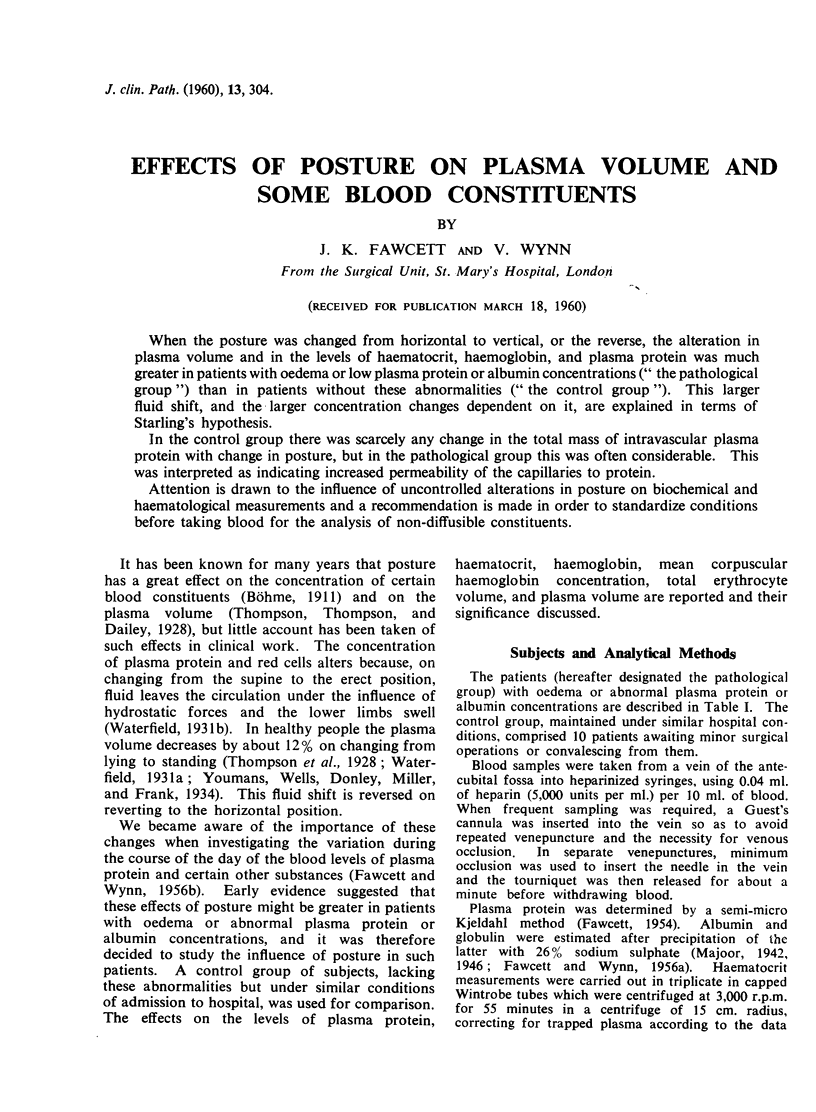
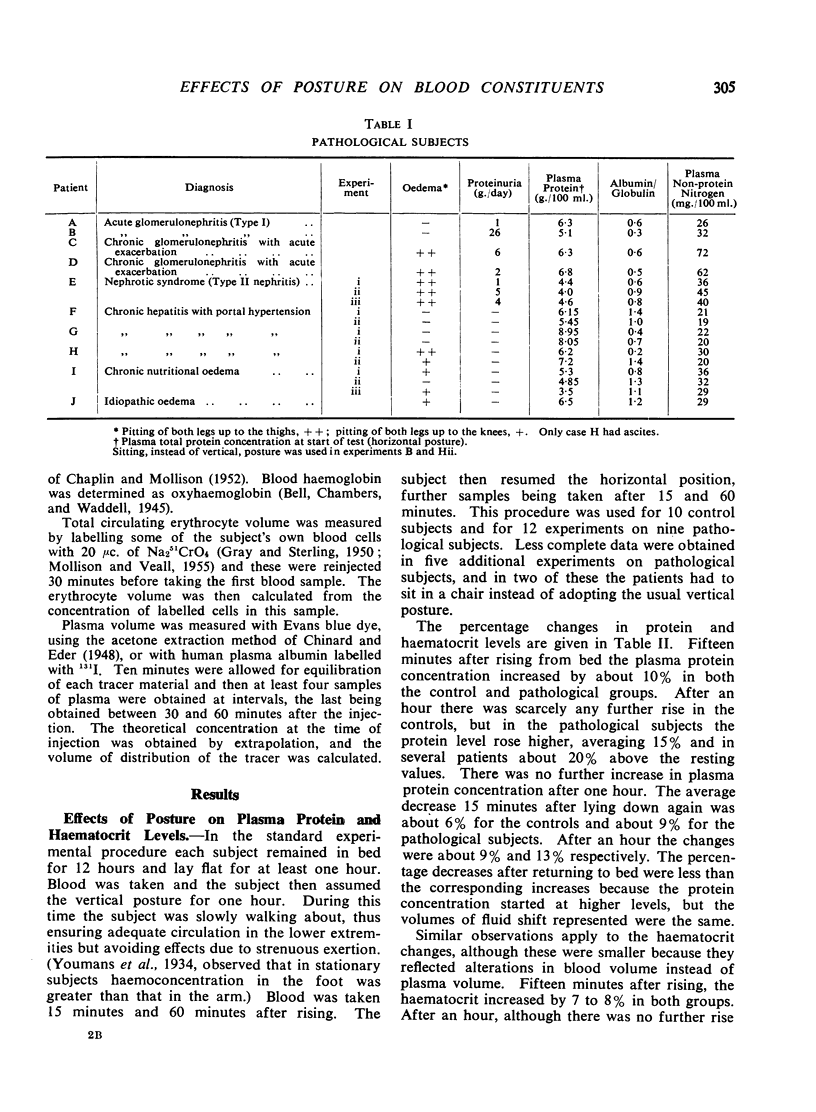
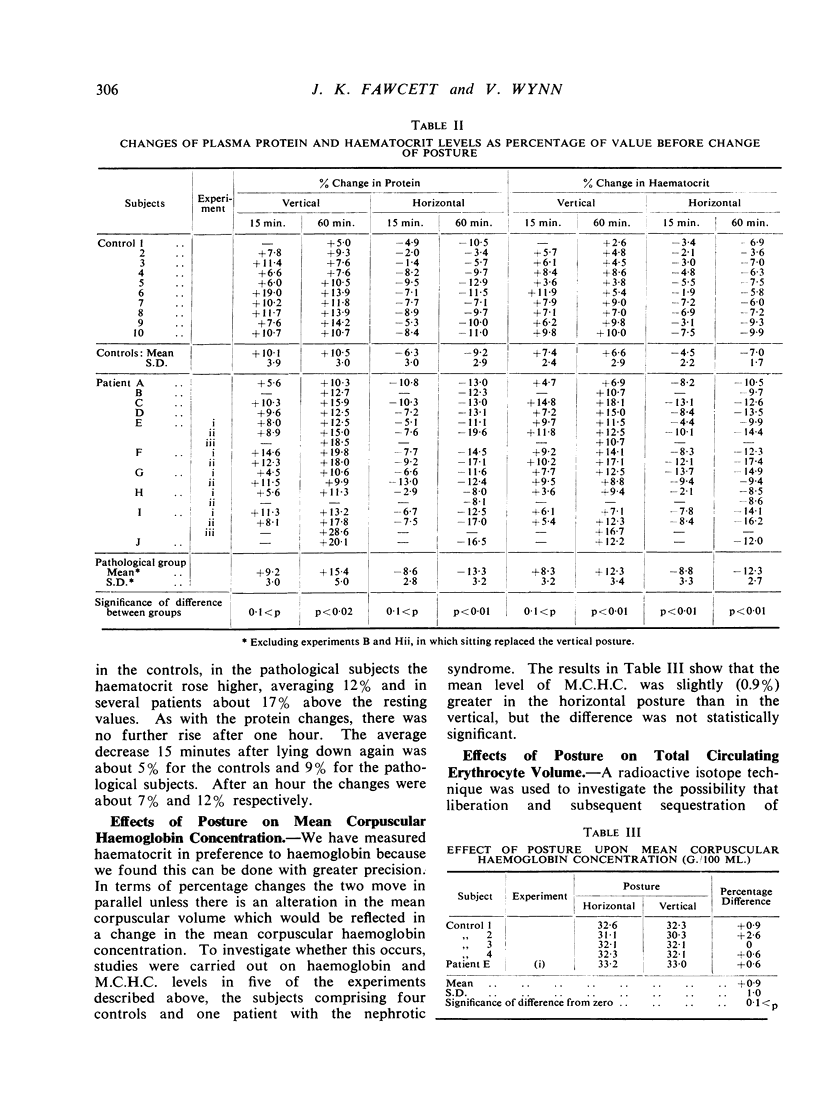
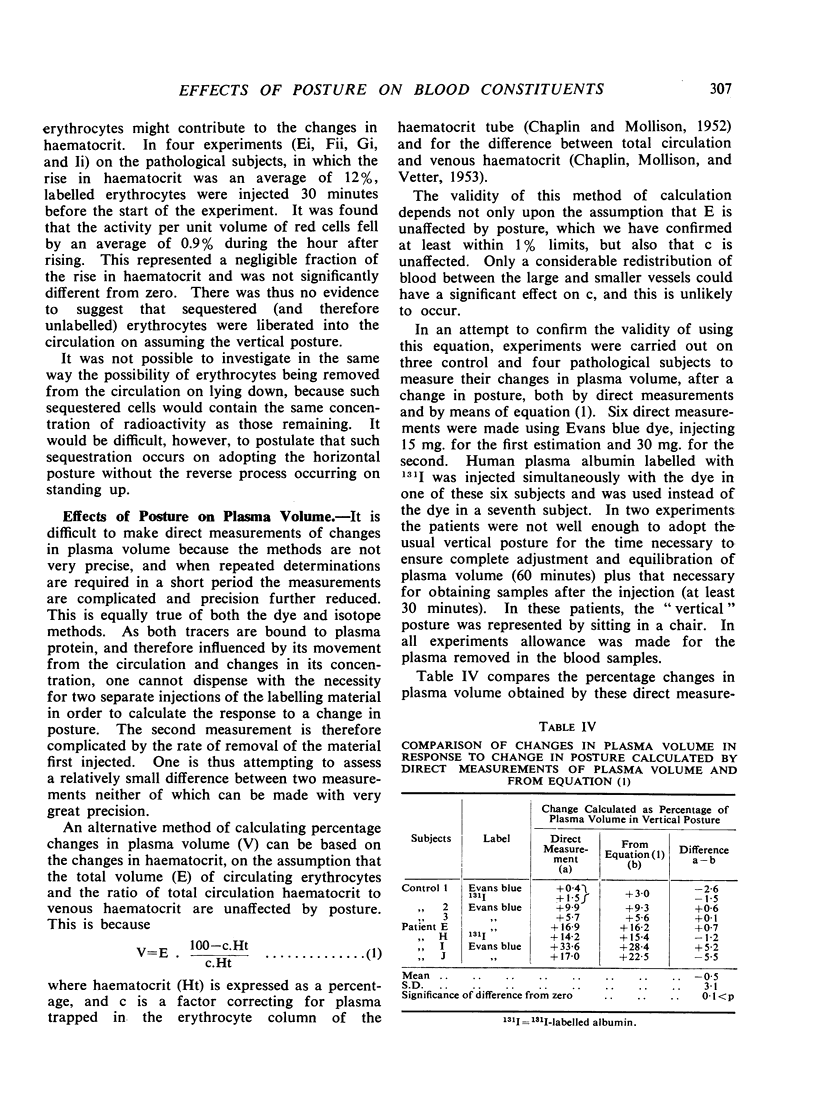
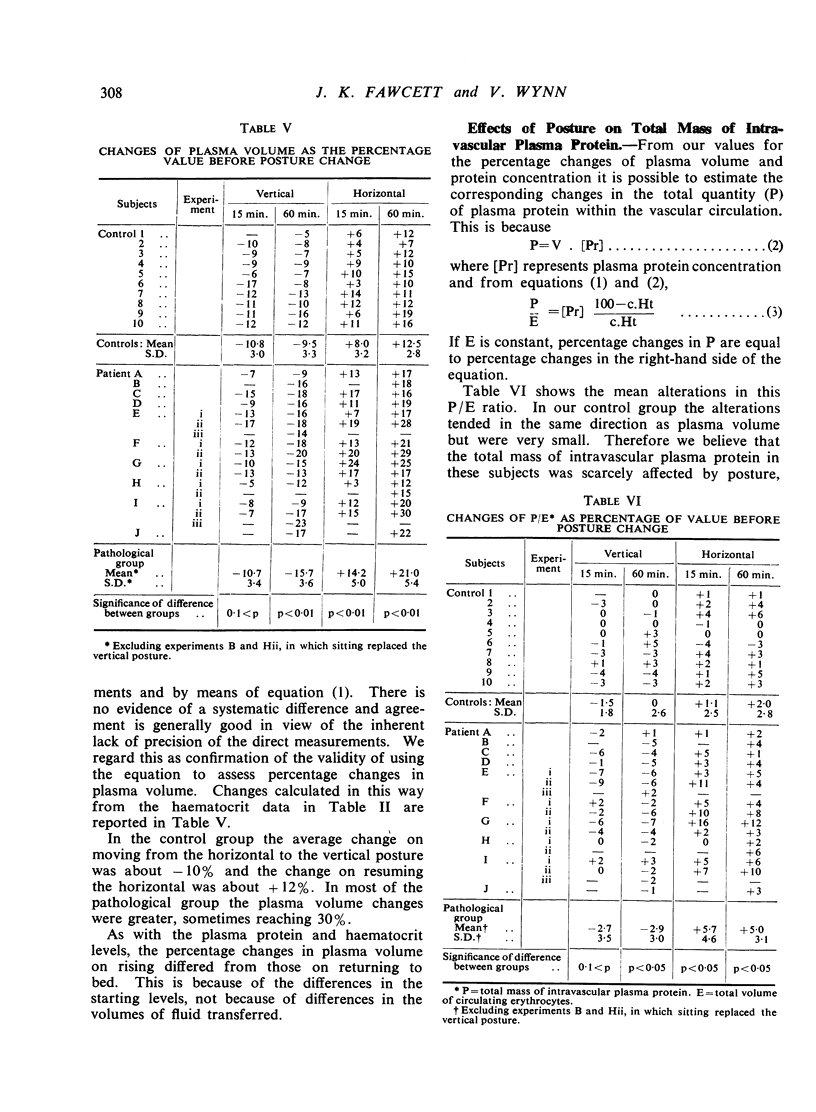
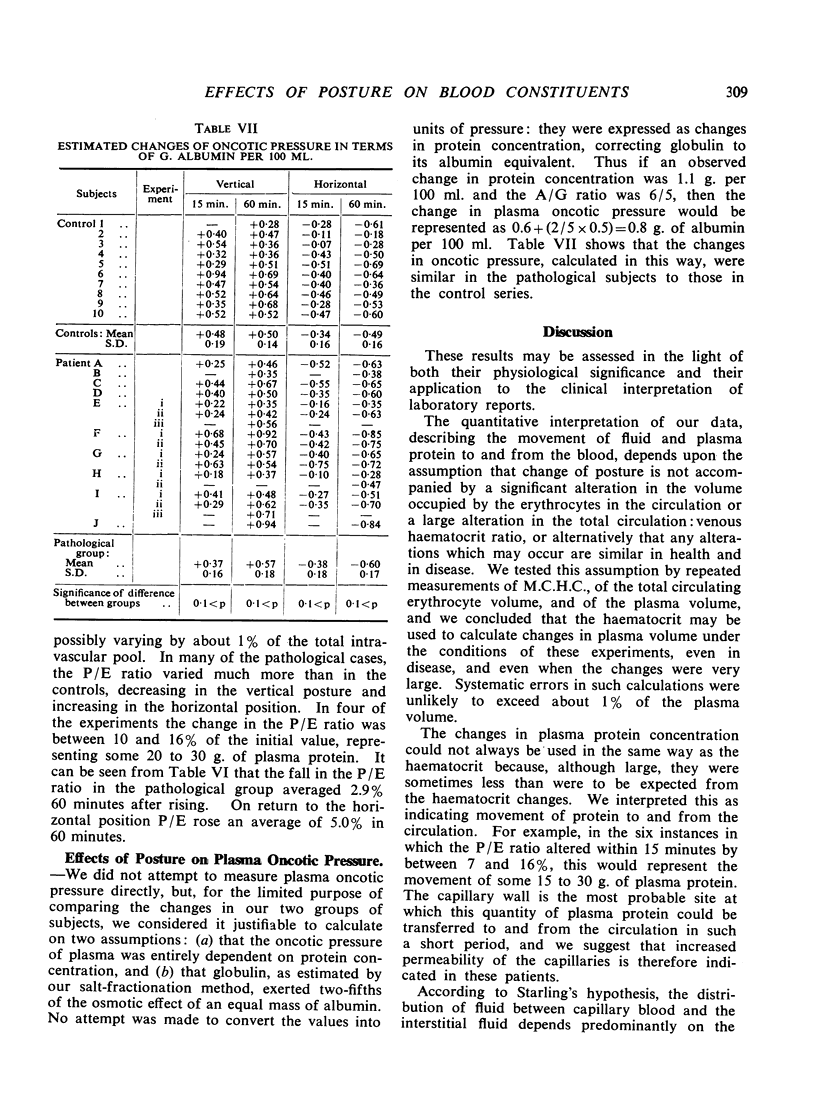
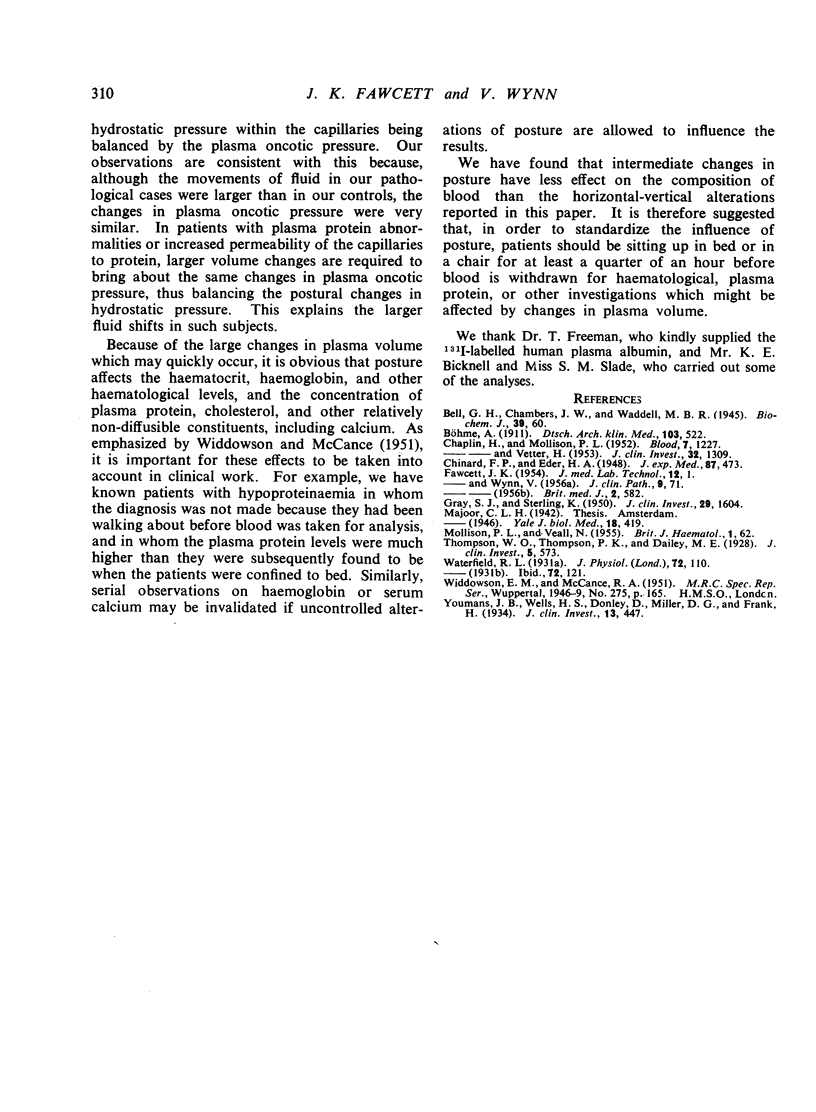
Selected References
These references are in PubMed. This may not be the complete list of references from this article.
- Bell G. H., Chambers J. W., Waddell M. B. The routine estimation of haemoglobin as oxyhaemoglobin. Biochem J. 1945;39(1):60–63. doi: 10.1042/bj0390060. [DOI] [PMC free article] [PubMed] [Google Scholar]
- CHAPLIN H., Jr, MOLLISON P. L. Correction for plasma trapped in the red cell column of the hematocrit. Blood. 1952 Dec;7(12):1227–1238. [PubMed] [Google Scholar]
- CHAPLIN H., Jr, MOLLISON P. L., VETTER H. The body/venous hematocrit ratio: its constancy over a wide hematocrit range. J Clin Invest. 1953 Dec;32(12):1309–1316. doi: 10.1172/JCI102859. [DOI] [PMC free article] [PubMed] [Google Scholar]
- FAWCETT J. K. The semi-micro Kjeldahl method for the determination of nitrogen. J Med Lab Technol. 1954 Jan;12(1):1–22. [PubMed] [Google Scholar]
- GRAY S. J., STERLING K. The tagging of red cells and plasma proteins with radioactive chromium. J Clin Invest. 1950 Dec;29(12):1604–1613. doi: 10.1172/JCI102403. [DOI] [PMC free article] [PubMed] [Google Scholar]
- MOLLISON P. L., VEALL N. The use of the isotope 51Cr as a label for red cells. Br J Haematol. 1955 Jan;1(1):62–74. doi: 10.1111/j.1365-2141.1955.tb05489.x. [DOI] [PubMed] [Google Scholar]
- Thompson W. O., Thompson P. K., Dailey M. E. THE EFFECT OF POSTURE UPON THE COMPOSITION AND VOLUME OF THE BLOOD IN MAN. J Clin Invest. 1928 Jun;5(4):573–604. doi: 10.1172/JCI100179. [DOI] [PMC free article] [PubMed] [Google Scholar]
- WIDDOWSON E. M., McCANCE R. A. Studies of undernutrition, Wuppertal 1946-9. IX. The effect of undernutrition and of posture on the volume and composition of the body fluids. Spec Rep Ser Med Res Counc (G B) 1951;275:165–174. [PubMed] [Google Scholar]
- Waterfield R. L. The effects of posture on the circulating blood volume. J Physiol. 1931 Jun 6;72(1):110–120. doi: 10.1113/jphysiol.1931.sp002765. [DOI] [PMC free article] [PubMed] [Google Scholar]
- Youmans J. B., Wells H. S., Donley D., Miller D. G., Frank H. THE EFFECT OF POSTURE (STANDING) ON THE SERUM PROTEIN CONCENTRATION AND COLLOID OSMOTIC PRESSURE OF BLOOD FROM THE FOOT IN RELATION TO THE FORMATION OF EDEMA. J Clin Invest. 1934 May;13(3):447–459. doi: 10.1172/JCI100597. [DOI] [PMC free article] [PubMed] [Google Scholar]


